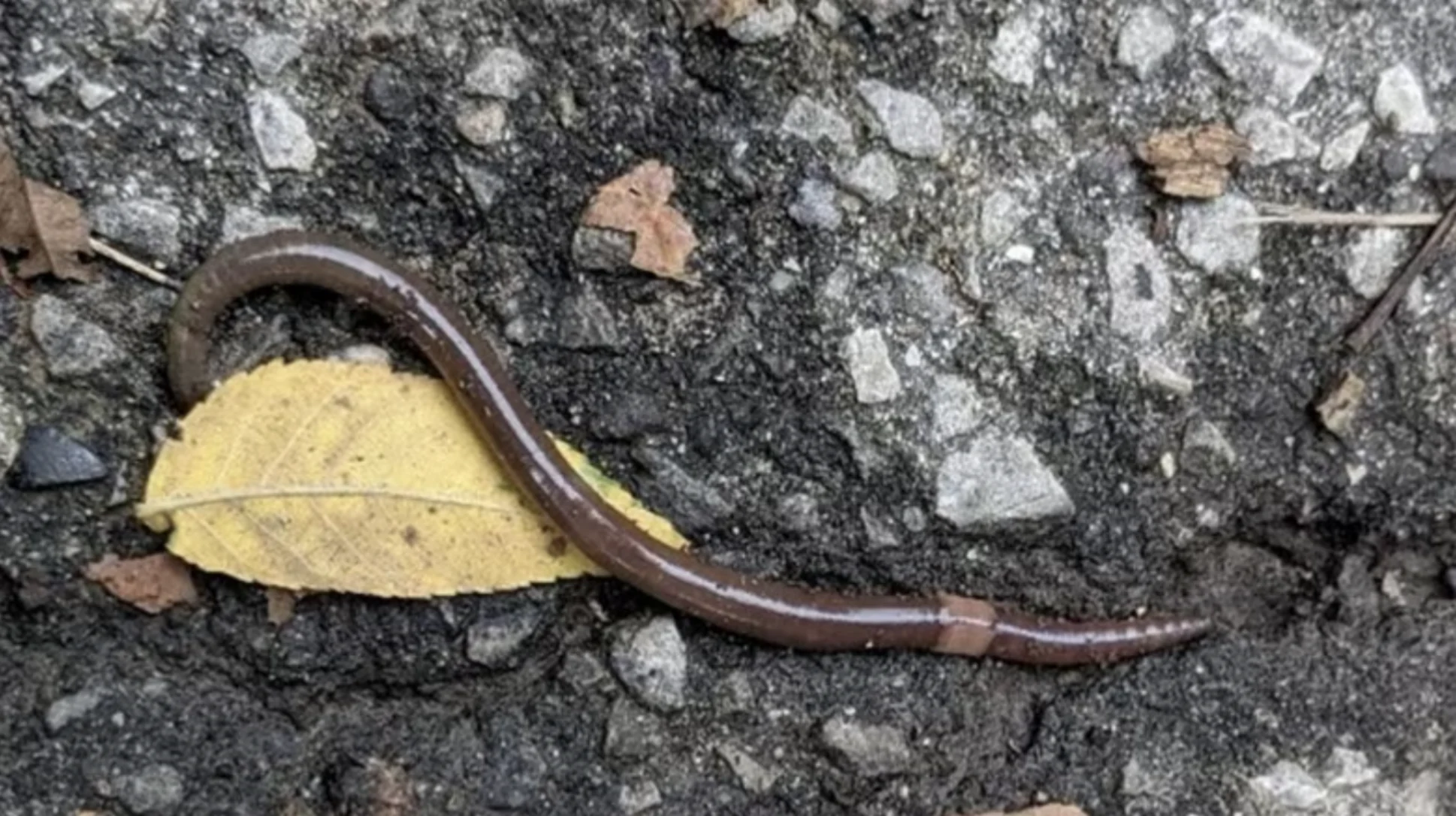
Jumping worms are invading gardens across Toronto. Here's what you should know
Luiza Monteiro was sitting by a fire in her garden when she heard a wiggling sound and made a "gross" discovery.
"I heard something thrashing around in my garden," said Monteiro, a master gardener in Roncesvalles Village.
What she found made her realize her garden was done for.
Monteiro's plot of land is the latest casualty in the fight against the invasive species, jumping worms.
Their presence has the Horticultural Societies of Parkdale and Toronto on high alert — so much so that they're telling their members to wash the roots of each plant they swap with one another.
"They don't go away," Monteiro told CBC Radio's Metro Morning.

Jumping worms often live in dense populations, just a few centimetres below the surface, leaving behind soil that many describe as looking similar to coffee grounds, according to the Invasive Species Centre. (Michael McTavish/Invasive Species Centre)
DON'T MISS: As fires rage, unusually dry conditions cover nearly half of Canada
Clement Kent, a biologist and vice president of the gardening club, says it has been hosting plant swaps for over a century.
"[In] previous years there was no issue with having soil from somebody else's garden come to your garden, but now you could be spreading the jumping worm," said Kent.
"It's really sad for us as gardeners. It's sad for farmers and for foresters because it's going to reduce the fertility of our soil," said Kent. The jumping worm "competes" with native or garden plants for food, he added.
Jumping worms are an earthworm species that were likely introduced to the North American continent by European settlers in the 18th century, according to the Invasive Species Centre. The centre says they've grown in numbers throughout various parts of the U.S., but that Canada and Ontario have yet to see such growth.
They were first spotted in the province almost a decade ago but have been making more appearances throughout the GTA — making it an "up-and-comer" species to keep an eye on for the centre.
A threat to native species
"The individual damage one might do, it might not be the worst, but they just have such high numbers," said the centre's policy manager Colin Casin. "I think we're really starting to understand ... the impact."
The worms will eat through layers of soil that serve as a form of nutrients for trees and flora as well as a habitat for critters and other animals.
If you're trying to spot the pests in your garden, their waste leaves behind changes in soil texture that resemble ground coffee, the centre says.
Given the opportunity to multiply at a larger scale, they can damage and alter the landscape of our forests, Casin said.
"Once they become established at a site, they're really there and there's not a whole lot we can do," said Casin.
Casin says people can prevent the pests from spreading by making sure to cleaning off the mud underneath shoes when going from one trail to another, avoiding plant swaps and even reporting sightings of them to the centre and other community apps to help researchers keep track.
"It's those preventative actions that can really help us kind of fend off the worst impacts," said Casin.
This article was originally published for CBC News on June 11. Contains files from CBC Radio's Metro Morning.